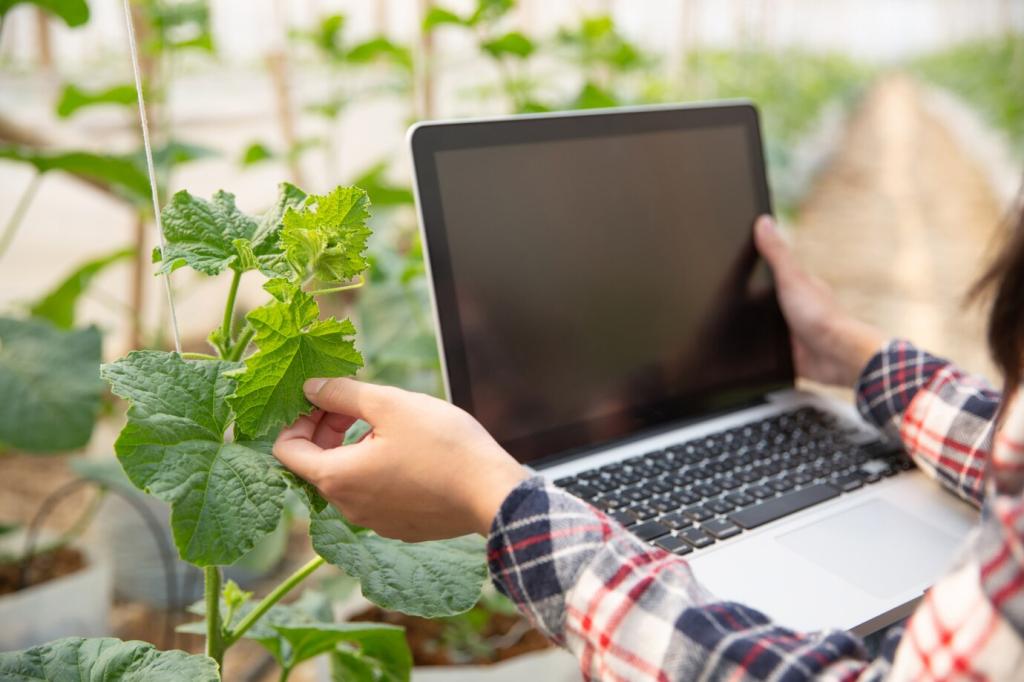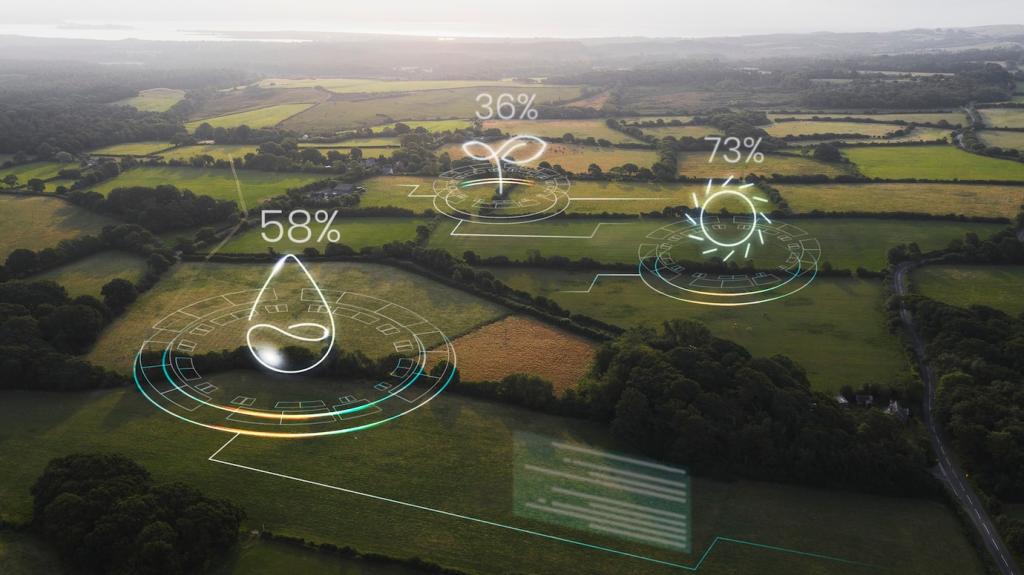
Urban Farming Innovations: Smart Technology Integration
Urban farming is undergoing a transformative shift fueled by the integration of smart technologies. As cities grow denser, innovative approaches are required to maximize limited space, improve food security, and promote sustainability. The fusion of agriculture with cutting-edge digital tools is revolutionizing how crops are cultivated, monitored, and harvested within urban environments. This page explores the forefront of urban farming, examining the key smart technology advancements that are shaping the future of city agriculture.
Real-Time Monitoring Systems
Real-time monitoring leverages internet-connected sensors to track variables like moisture, pH, temperature, and nutrient levels within city gardens and rooftop farms. These systems provide urban farmers with constant feedback, enabling them to make immediate adjustments to their crop management strategies. By responding to plant needs instantaneously, growers optimize yields while reducing both water and fertilizer waste. The ability to view data remotely—often via a smartphone app—adds unprecedented flexibility and convenience, especially crucial in fast-paced city life environments where urban farmers may manage multiple locations simultaneously.
Automated Irrigation Networks
Automated irrigation networks are at the heart of smart urban agriculture, bringing efficient and consistent water delivery to crops growing in diverse city conditions. These systems employ sensors and programmable controllers to deliver water only when and where it’s needed, eliminating the guesswork and overhead associated with manual watering. By integrating weather forecasts and real-time soil measurements, automated irrigation adapts to changing conditions and ensures plant health, even in challenging environments like high-rise rooftops or compact indoor gardens. This technology frees up valuable time for urban farmers and significantly curtails water consumption in resource-limited urban landscapes.
Predictive Analytics for Crop Planning
Predictive analytics harnesses artificial intelligence and data modeling to forecast crop performance and guide planting decisions. In urban settings characterized by space constraints and variable microclimates, this technology enables farmers to predict optimal planting times and select crop varieties with the highest expected yields. By analyzing historical data, weather predictions, and sensor information, predictive analytics provides actionable insights that take the uncertainty out of city farming. This results in increased efficiency, better risk management, and more reliable supplies of fresh produce for local communities.
Vertical Farming and Controlled Environments
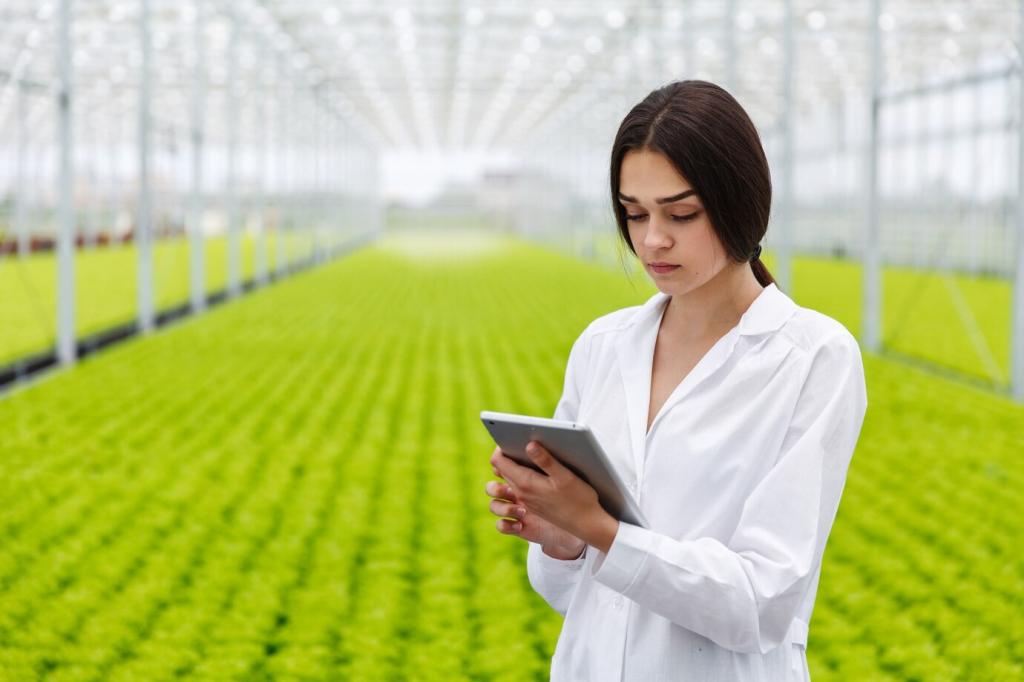
Climate Control and HVAC Systems
Climate control systems regulate temperature, humidity, and CO₂ concentration within vertical farms, ensuring optimal conditions for plant growth irrespective of external weather fluctuations. These smart HVAC (Heating, Ventilation, and Air Conditioning) systems are equipped with feedback mechanisms and remote monitoring capabilities, making it possible for urban farmers to maintain precise growing environments. Reliability is paramount—any deviation could compromise an entire crop. Thus, the synergy between climate control technology and urban agriculture is essential, providing stability and reducing the risks associated with urban farming.
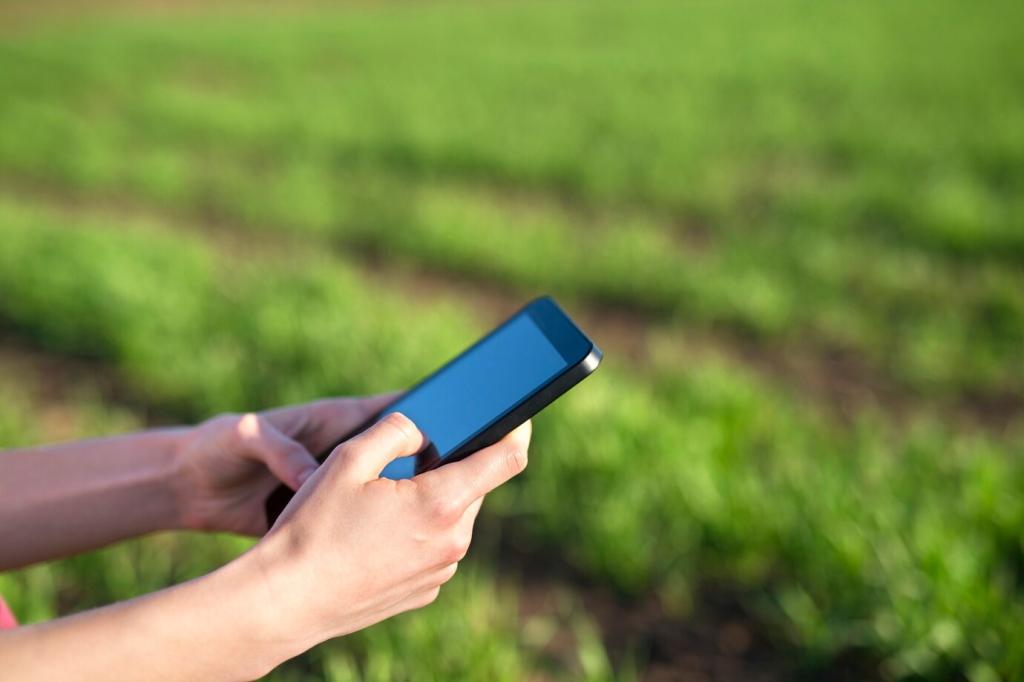
LED Lighting Innovations
Urban farms often lack access to consistent natural sunlight, particularly those housed in retrofitted warehouses or underground locations. LED lighting innovations provide a tailored spectrum of light, delivering the exact wavelengths plants need for photosynthesis and healthy development. Programmable LEDs enable city farmers to simulate sunrise, sunset, and seasonal light changes, enhancing growth rates and crop quality. These energy-efficient systems reduce electricity costs and support sustainability, making it feasible for urban agriculture to flourish in spaces that were previously unsuitable for plant cultivation.

Automated Nutrient Delivery Systems
An integral part of controlled environment agriculture, automated nutrient delivery systems, or fertigation systems, dissolve and distribute bespoke nutrient mixes to plants according to specific crop requirements. These systems operate in tandem with real-time monitoring devices, supplying the right balance of minerals at precisely the right times. The result is healthier plants and higher yields, achieved with less labor and lower chances of nutrient runoff, a crucial benefit in protecting urban water sources. Urban farmers benefit from peace of mind, knowing that crop nutrition is continuously optimized by smart technology.
Networks of IoT-enabled sensors monitor every aspect of plant health, from vital signs like growth rates and leaf color to environmental stresses such as air pollution or pest infestations. These interconnected systems aggregate and send data to central dashboards or cloud platforms, where it can be analyzed and acted upon. The immediate alerting function allows urban farmers to respond swiftly to any anomalies, mitigating crop loss risks and ensuring consistent quality for consumers. The scalability of sensor networks also means city farms can expand operations while maintaining granular oversight.
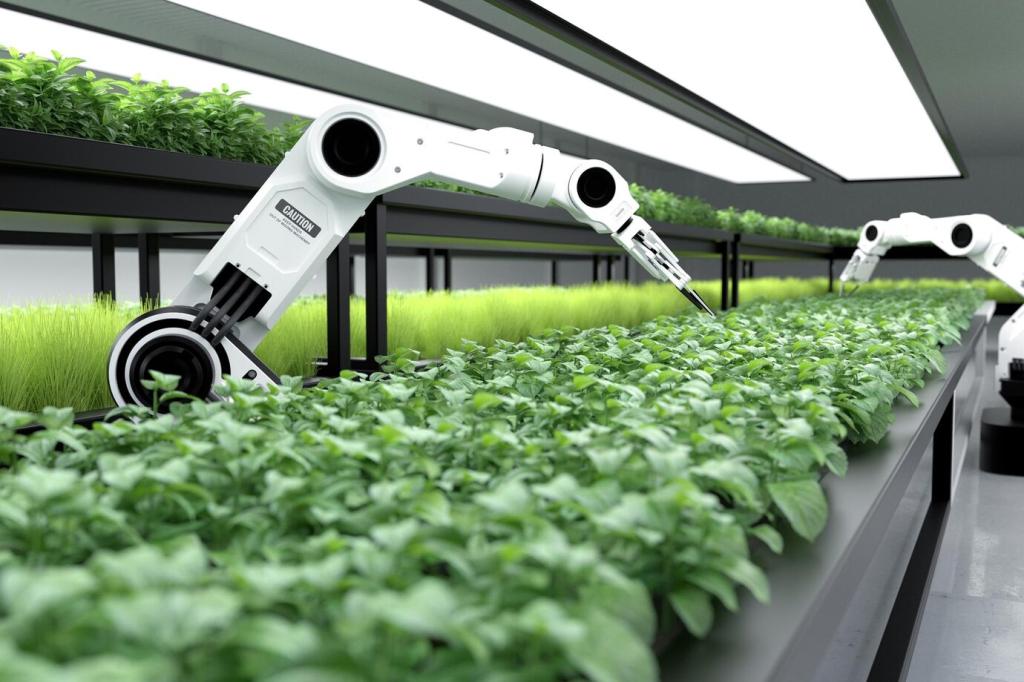
Data-Driven Sustainability Practices
Water Conservation Technologies
Water scarcity poses a persistent challenge for city-based agriculture. Data-enabled technologies, such as soil moisture sensors and weather prediction tools, allow urban farmers to apply water with surgical precision. These systems not only ensure each plant receives the optimal amount of moisture, but also help to identify irrigation inefficiencies and leaks in real time. The cumulative effect is significant water savings, making urban agriculture more viable in arid regions or during drought periods—a vital step towards building resilient food systems in urban centers.
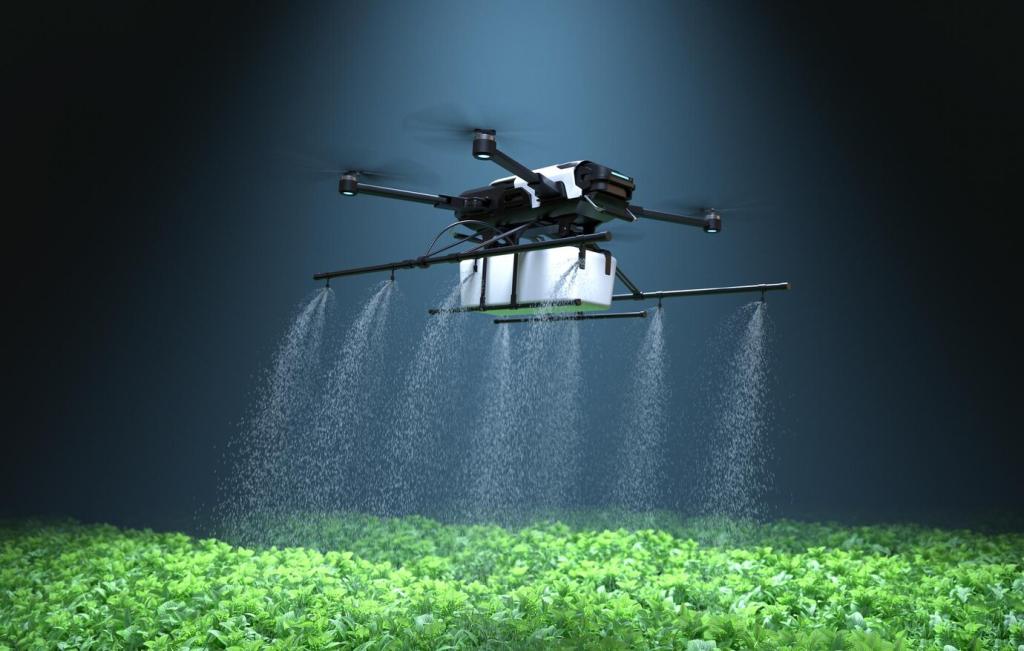
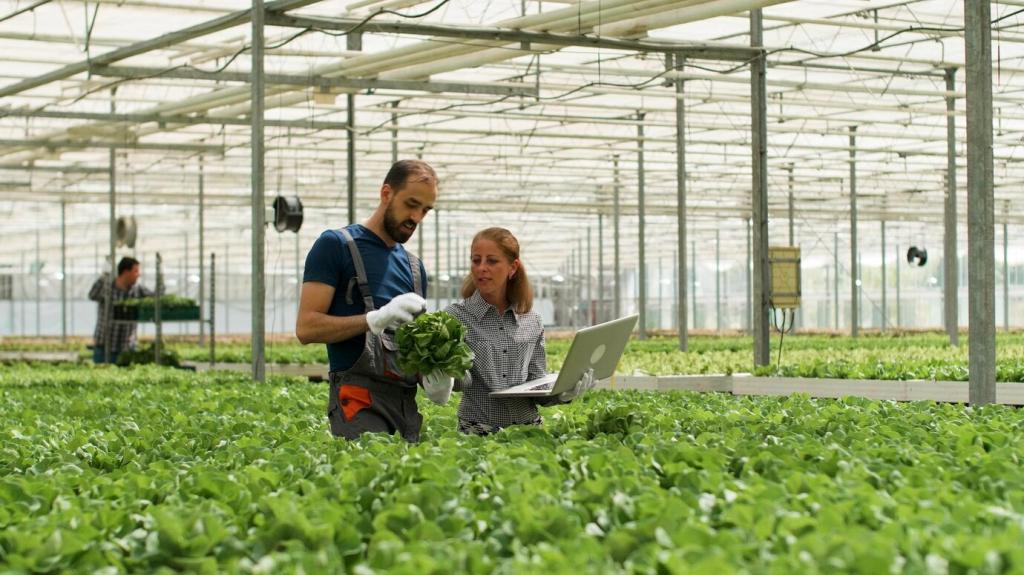
Seeding and Planting Robots
Urban farms often operate in unconventional locations where maximizing space and maintaining precision is crucial. Seeding and planting robots are designed to navigate tight quarters, ensuring each seed is placed at the optimal depth and spacing for growth. These machines eliminate human error and reduce labor costs, allowing for faster setup of new crops and consistent results. As technology advances, seeding robots can adapt in real time to different crops and container shapes, drastically increasing the flexibility and productivity of urban farming operations.
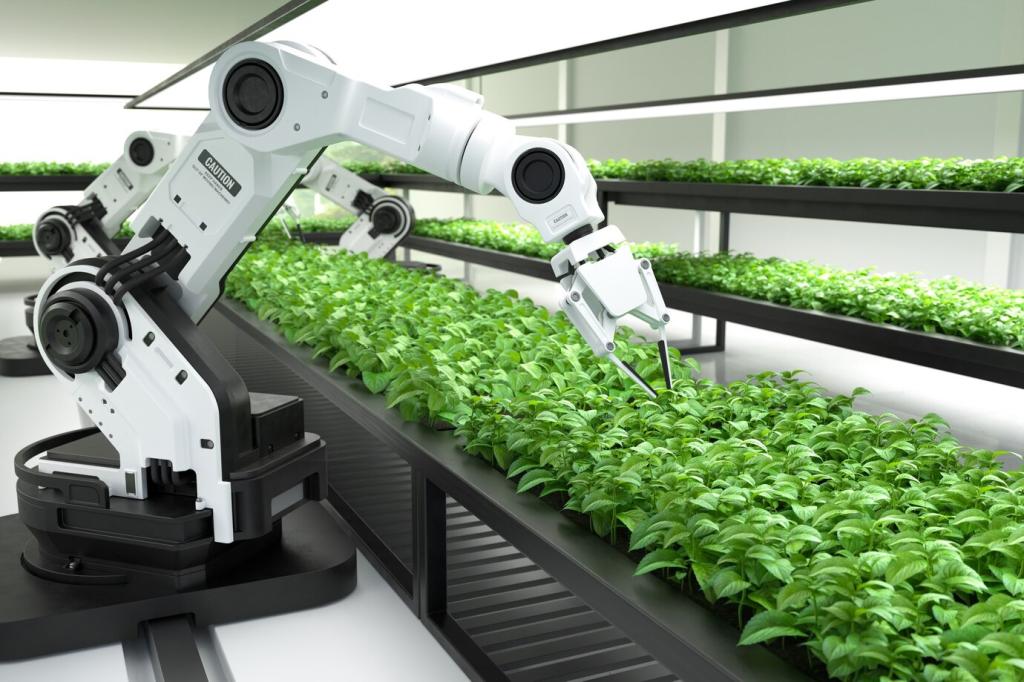
Automated Harvesting Systems
Harvesting is a labor-intensive stage of any farming operation, often requiring speed and delicacy to prevent damage to the produce. Automation in harvesting uses purpose-built robots equipped with sensors and machine learning algorithms to identify ripeness, gently pick crops, and sort them for distribution. These smart systems can operate around the clock—an advantage in high-value city crops like herbs, leafy greens, and berries. By ensuring efficiency and quality, automated harvesting reduces food waste and labor requirements, making city farming more economically sustainable.
Disease and Pest Detection Algorithms
Early detection of plant diseases and pests is critical in preventing widespread loss in urban farms, where close quarters can amplify problems. AI-powered vision systems and diagnostic tools analyze images and environmental data to identify symptoms far earlier than human observation would allow. These automated systems continuously scan crops, flagging abnormalities with remarkable accuracy and speed. The result is minimized losses, targeted pesticide use, and healthier plants, all achieved with less manual intervention. This proactive approach turns urban farms into resilient, self-monitoring ecosystems.
Yield Prediction Models
Machine learning algorithms excel at recognizing patterns in large volumes of agricultural data, making them invaluable for yield prediction. Urban farmers feed information on historical yields, weather patterns, sensor readings, and management practices into these models, generating reliable forecasts for upcoming harvests. This foresight empowers growers to plan sales, deliveries, and future planting with confidence, reducing financial risk and aligning output with local demand. Enhanced yield prediction models also help urban farmers secure investment and insurance, further strengthening the sector’s foundation.
Community Engagement and Tech-Enabled Education
Urban farms are increasingly turning to community-powered data collection—often called citizen science—to gather information on urban biodiversity, air quality, and crop health. Through smartphone apps and connected sensors, residents can contribute to real-time databases, supporting farms in monitoring trends and detecting environmental issues. This collaborative approach strengthens the sense of ownership within communities and provides farms with valuable datasets that inform more resilient agricultural practices. Citizen science not only democratizes technology but also fosters a culture of urban environmental stewardship.
In the digital era, urban farms are opening their doors to the public through virtual tours, live-streamed workshops, and interactive educational modules. These initiatives, powered by VR, AR, and cloud video platforms, make learning about urban agriculture engaging and accessible, regardless of physical location. Schools and community groups can explore sophisticated city farms, observe smart technology in action, and gain insights into sustainable practices. Virtual learning bridges the gap between urban farming innovation and the broader population, inspiring the next generation of tech-savvy urban growers.
Turning learning and participation into games has proven highly effective in engaging residents with city agriculture. Gamified platforms allow users to manage virtual urban farms, make resource-allocation decisions, and collaborate with others to solve real-world challenges. These experiences often connect directly with physical farms, influencing community planting schedules or supporting local food security projects. Gamification not only educates but also motivates deeper, more meaningful community involvement, nurturing a city-wide appreciation for the benefits and intricacies of tech-integrated urban farming.
